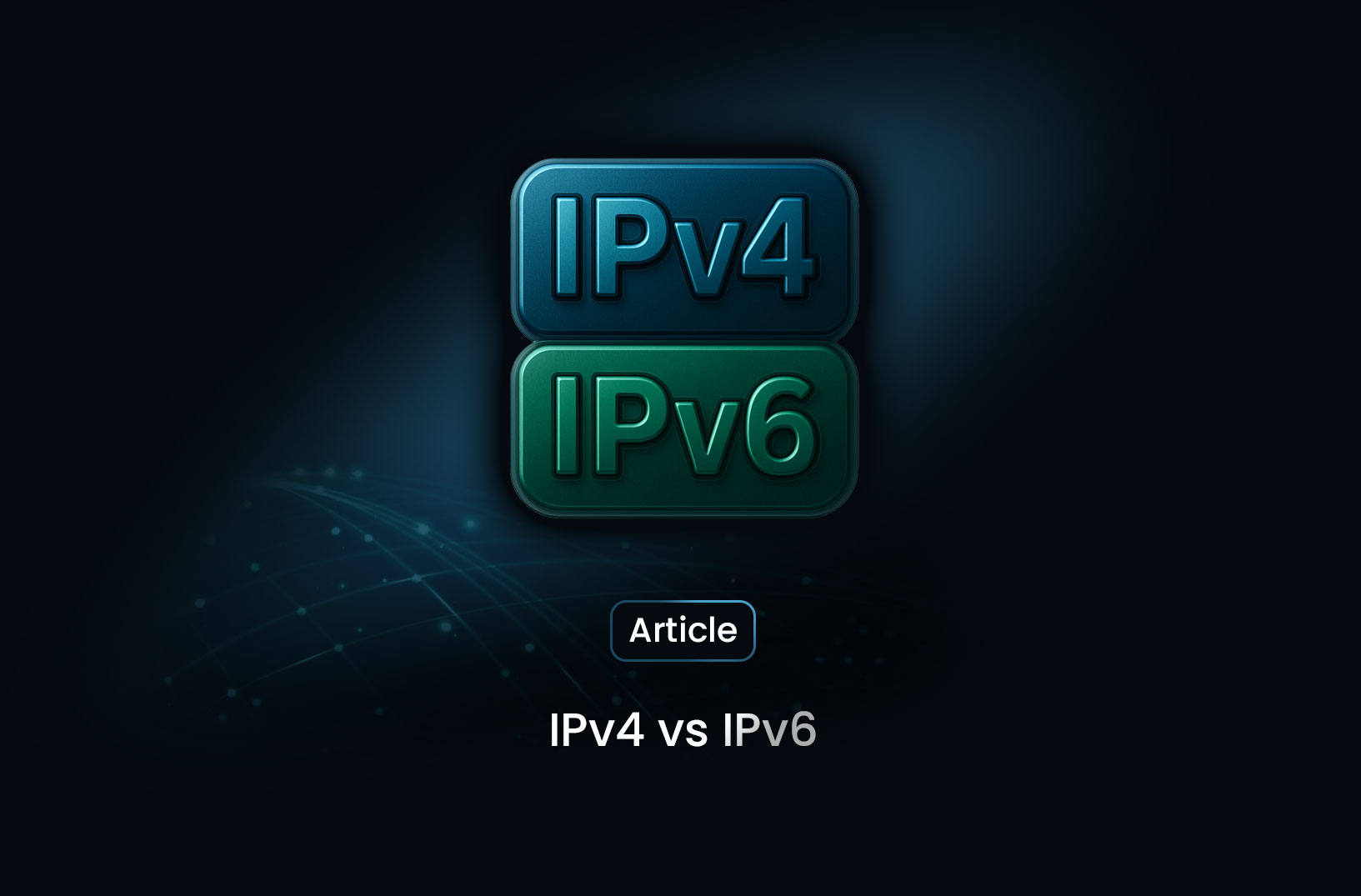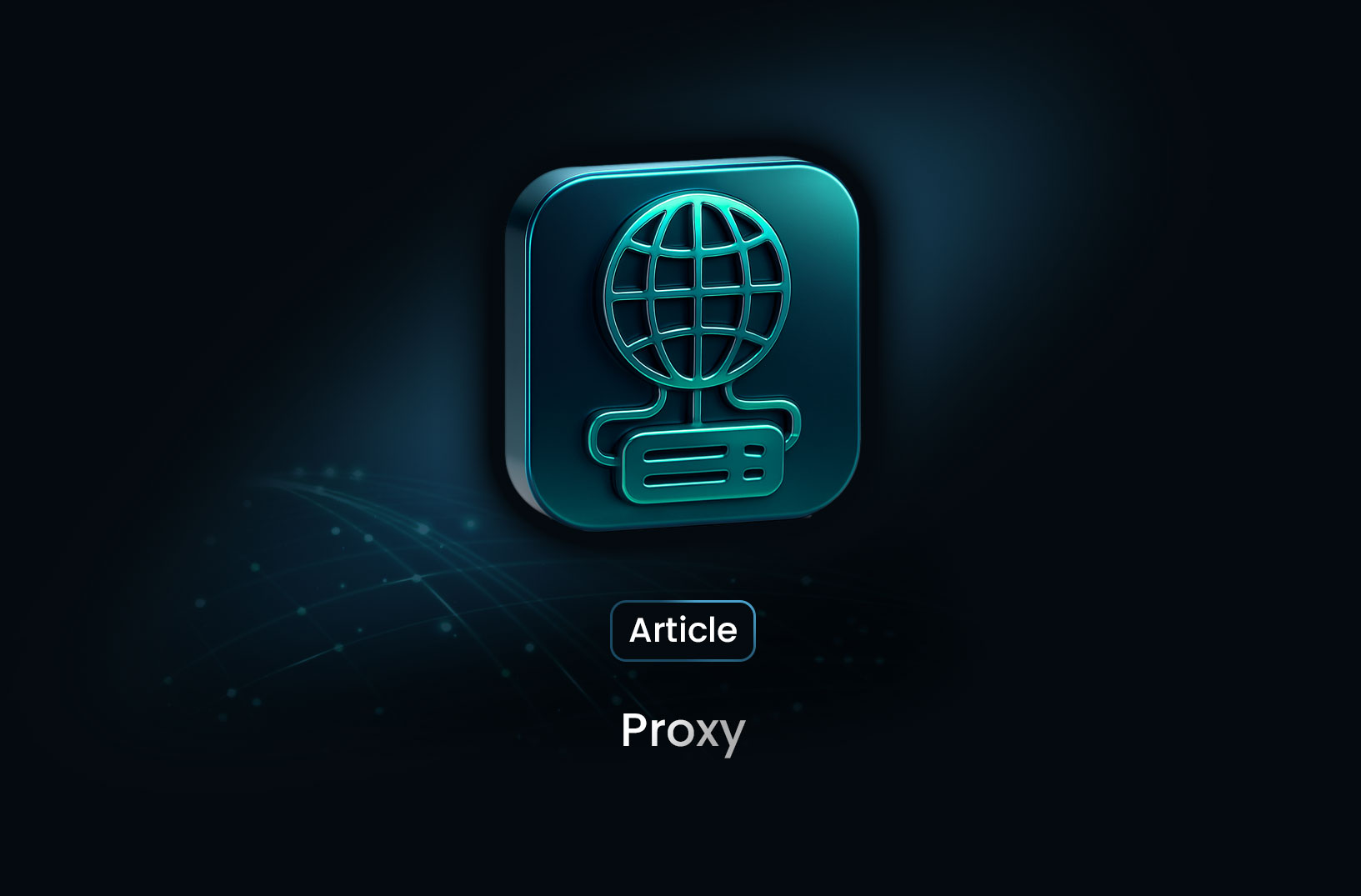
IPv4 vs IPv6: Key Differences, Benefits, and Why It Matters Today
ArticleIPv4 and IPv6 both power the internet, but they differ in address capacity, performance, and security. IPv6 offers faster routing, built-in encryption, and virtually unlimited addresses — making it the future of global connectivity.
What Is IPv4 and IPv6? !
The Internet relies on IP (Internet Protocol) addresses to identify and connect devices worldwide. Every computer, phone, or server that connects to the web uses an IP address to send and receive data.
- IPv4 (Internet Protocol version 4) was developed in the early 1980s and has been the backbone of the internet ever since.
- IPv6 (Internet Protocol version 6) is its modern successor, designed to solve the problem of IPv4 address exhaustion and improve internet performance and security.
Although both serve the same purpose—routing data between devices—they differ significantly in structure, capacity, and technology.
Main Differences Between IPv4 and IPv6
| Aspect | IPv4 | IPv6 |
|---|---|---|
| Address Format | 32-bit numeric (e.g., 192.168.0.1) | 128-bit alphanumeric (e.g., 2001:0db8:85a3::8a2e:0370:7334) |
| Total Addresses | ~4.3 billion | 340 undecillion (virtually unlimited) |
| Header Complexity | Complex and less efficient | Simplified for faster routing |
| Configuration | Manual or DHCP | Auto-configuration and stateless addressing |
| Security | Optional (IPSec optional) | IPSec mandatory for encryption and authentication |
| NAT (Network Address Translation) | Common due to limited addresses | Not required (enough addresses for every device) |
| Broadcast Support | Yes | No broadcast; uses multicast instead |
| Performance | Slightly slower under load | Better routing and performance efficiency |
| Compatibility | Supported by all systems | Supported by modern systems, still rolling out globally |
Why IPv6 Was Created
IPv4 was never designed to handle the explosion of internet-connected devices we see today. With billions of smartphones, IoT devices, and servers online, IPv4’s 4.3 billion addresses are no longer enough.
IPv6 solves this by offering a vastly larger address pool and features that improve speed, security, and network management. It also eliminates the need for NAT, simplifying connections and reducing latency in peer-to-peer communications.
Advantages of IPv6 Over IPv4
- Virtually Unlimited Addresses – IPv6 provides enough addresses for every device on earth — and beyond.
- Faster Routing – Simplified headers improve data transmission efficiency.
- Built-in Security – IPv6 was designed with IPSec integration for encryption and authentication.
- Auto-Configuration – Devices can configure themselves automatically without a DHCP server.
- Better Support for Mobile Networks – IPv6 handles mobility and roaming more efficiently.
Challenges and Transition
The global transition from IPv4 to IPv6 is ongoing. While most modern operating systems and ISPs support IPv6, full adoption takes time because:
- Legacy hardware may not support IPv6.
- Some networks still rely on IPv4 for compatibility.
- Dual-stack configurations (using both protocols) require maintenance and monitoring.
Despite these challenges, IPv6 adoption continues to grow steadily — especially across cloud providers, telecoms, and global enterprises.
How Businesses Can Adapt
For organizations handling large-scale data operations or multiple networks, adopting IPv6 ensures long-term scalability and improved network performance. Its modern infrastructure supports faster connectivity and smoother communication across global endpoints.
Conclusion
The difference between IPv4 and IPv6 lies not only in numbers but in vision. IPv6 represents the next step in internet evolution — enabling unlimited connectivity, improved security, and faster performance.
While IPv4 remains widely used, the transition to IPv6 is inevitable as the world demands more connected devices and seamless communication.
Find more insights here

LunaProxy vs PYPROXY — Which Proxy Service Fits Your Needs in 2025?
Compare LunaProxy and PYPROXY in 2025 to find out which proxy service fits your scraping, automation...

Proxy 101: What Is a Proxy and Why It Matters for Web Scraping
Learn what a proxy is, how it works, the different types of proxies, and why proxies are essential f...

7 Most Effective AI Web Scraping Tools for Automated Data Extraction in 2025
A look at 7 AI web scraping tools that stand out in 2025—what they offer, how they work, and why MrS...
